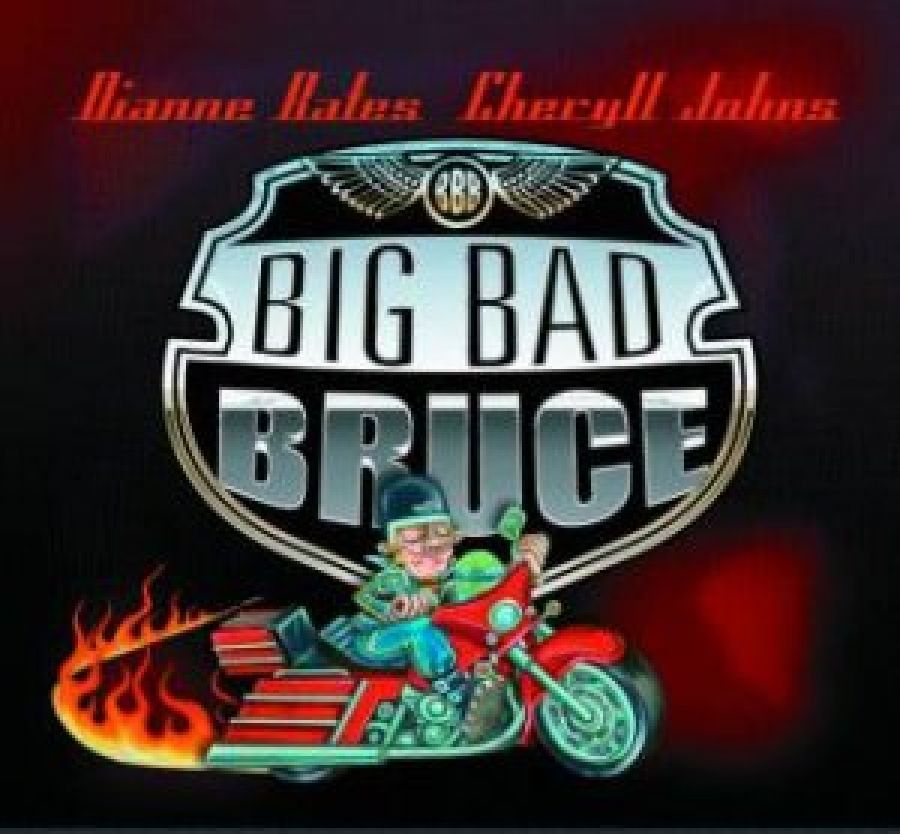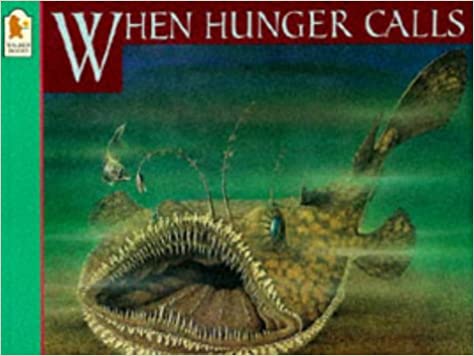
- Free Article: No
- Contents Category: Children's Fiction
- Review Article: Yes
- Article Title: Picture books
- Online Only: No
- Custom Highlight Text:
Bates and Middleton are certainly valiant in their attempts to make a giant hollow rampaging male ego appear cute in Big Bad Bruce. Just look at it go! Indiscriminately swallowing everything in sight, making its way through the world astride a giant throbbing machine. But don’t toss this big glossy number aside – it can serve an excellent purpose. Treat it, allow me to suggest, thus.
- Book 1 Title: Big Bad Bruce
- Book 1 Biblio: A&R
- Book 1 Readings Link: https://www.booktopia.com.au/big-bad-bruce-dianne-bates/book/9780864617712.html
- Book 2 Title: When Hunger Calls
- Book 2 Biblio: Walker Books
- Book 2 Cover Small (400 x 600):

See Bob Graham’s Greetings from Sandy Beach for a really subtle and effective treatment of the notion that external appearances may not be the definitive guide to a person’s true nature. Then take one Big Bad Bruce and tear it to shreds – preferably in front of as many small children of both sexes as you can gather about.
The males of the party, having consumed enormous amounts of something smelly and bubbly, must then piss on the remains. The females, appropriately decorous and faceless, must then sauté the sodden shreds in a liberal amount of oil until golden brown. It shouldn’t then be too hard to find enough poor hungry mouths simply to swallow the lot.
Big Bad Bruce is about the leader of a bikie gang and Bruce has the biggest ‘most ginormous fighting machine in the world’. We follow the gang as they hurl abuse at each other and turn ugliness into an art form. The boys ‘tear through the suburbs’ causing people to run and quiver and quake, arriving at McGreasy’s where the waitress is leered at as they order up big. But Bruce, it is revealed, is really a nice guy; a pussy cat he is when he leaves the boys and burns home to the wife and kids to take them on a picnic. The final image is of Bruce with a kid on his shoulders, proprietorial arm draped over the wife, watching another kid play with a ball. We don’t see Mrs Bruce’s face, but we do see the waitress’s legs.
No miracles here, but plenty of miracles, yet again, in Bert Kitchen’s When Hunger Calls, another in his impeccable series of books which celebrates the wonders of the natural world. Kitchen doesn’t couch his text in narrative – he just tells the facts, this time about the amazing events that occur in nature when creatures are hungry.
This book may be a little less exciting than its predecessors. There are less of the really incredible occurrences revealed, but the wonder is still there, with big fish swallowing small fish, pythons swallowing gazelles, cobras rearing up, and frogs gulping down. Kitchen is a fine and polished artist who observes nature’s cruelty and beauty with a measured gaze and has the talent to reflect it with the clarity of a mirror. All the animals, even in the act of swallowing others whole, retain a magisterial dignity. Oh that Big Bad Bruce could take a leaf out of their book.
Jam Roll Press have taken some interesting risks with their publications, and their policy has carved them a strong niche as the risks have paid off. Definitely a publisher to watch, but they have slipped up on this one, The Grocer’s Daughter.
David Mackintosh’s radical visual treatment of The Emperor’s New Clothes had a real edge which many at the time thought too nasty for kids, but here, teaming up with writer Nigel Gray, he seems to have pushed way over the edge.
The Grocer’s Daughter tells the story of a wicked little girl who cuts off the tails of three blind mice, flushes the toiler with Eeyore’s tail, throws Dick Whittington’s cat down a well, cuts off Goldilock’s hair, throws old people’s false limbs down stairs, and so on. This is all supposed to be splendid anarchy at which we can laugh and realise, with this bad girl, that in the end this kind of behaviour leaves you all alone with no one loving you just as you have loved no one yourself.
Trouble is, we get all but the final page dedicated to the dismemberment of order and you wouldn’t blame kids for feeling that probably the wild rampaging was worth it in the end. It’s a bit like those films where the baddies are heroes because they get to play out all our worst fantasies. Dahl’s definitive versions of fairy tales re-written pushed this idea, but while he let children smash the nice namby-pamby myths of childhood, he stopped short at the celebration of pure evil and was, in the end, an essentially moral chap – but not afraid to test the rules.
It’s an easy thing just to toss conventions into the air, but to catch them and rearrange them – now there’s an art! It’s one that’s far from evident in The Grocer’s Daughter. Courage without wisdom, as any Grimm will tell you, leads to disaster, and this book is no exception to that rule.
Gray’s text is fairly disposable; mining traditional tales and rhymes for their moral messages, he subverts that message in what is supposed to be wicked and amusing, but is just as likely to be confusing and upsetting. It seems a pity that the distinctive qualities of Mackintosh’s illustrations are wasted thus. All his work suggests he may have that rare quality called individuality; it would be interesting to see what would happen if he applied it to illustrating picture books aimed at small children, not just colouring in the monsters that run rampant in all our heads.
This book may be subtitled ‘a cautionary tale’, but perhaps the only caution exercised here should be in putting it (along with the picture of a bowl of blood that depicts the death of Cock Robin) into the hands of a small child.


Comments powered by CComment